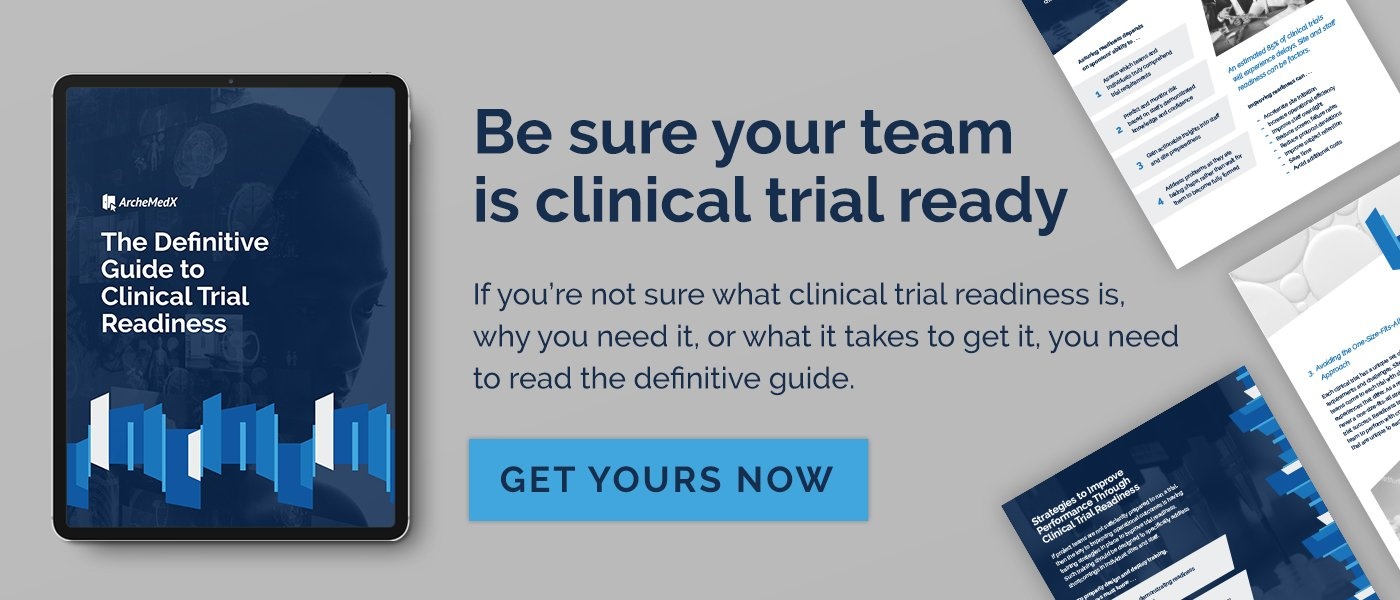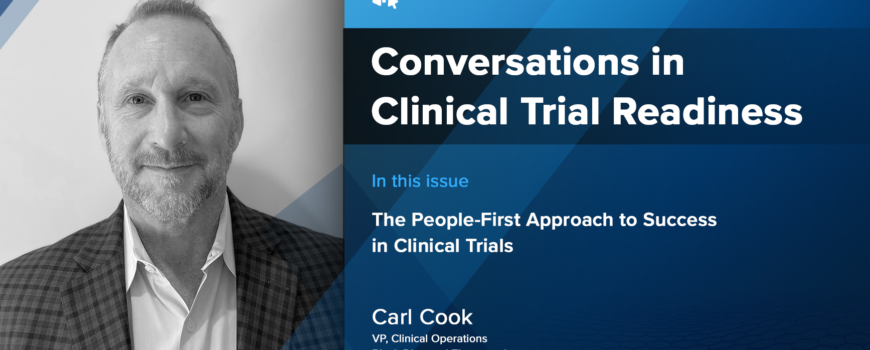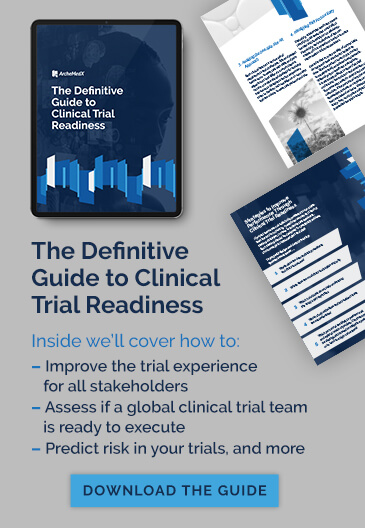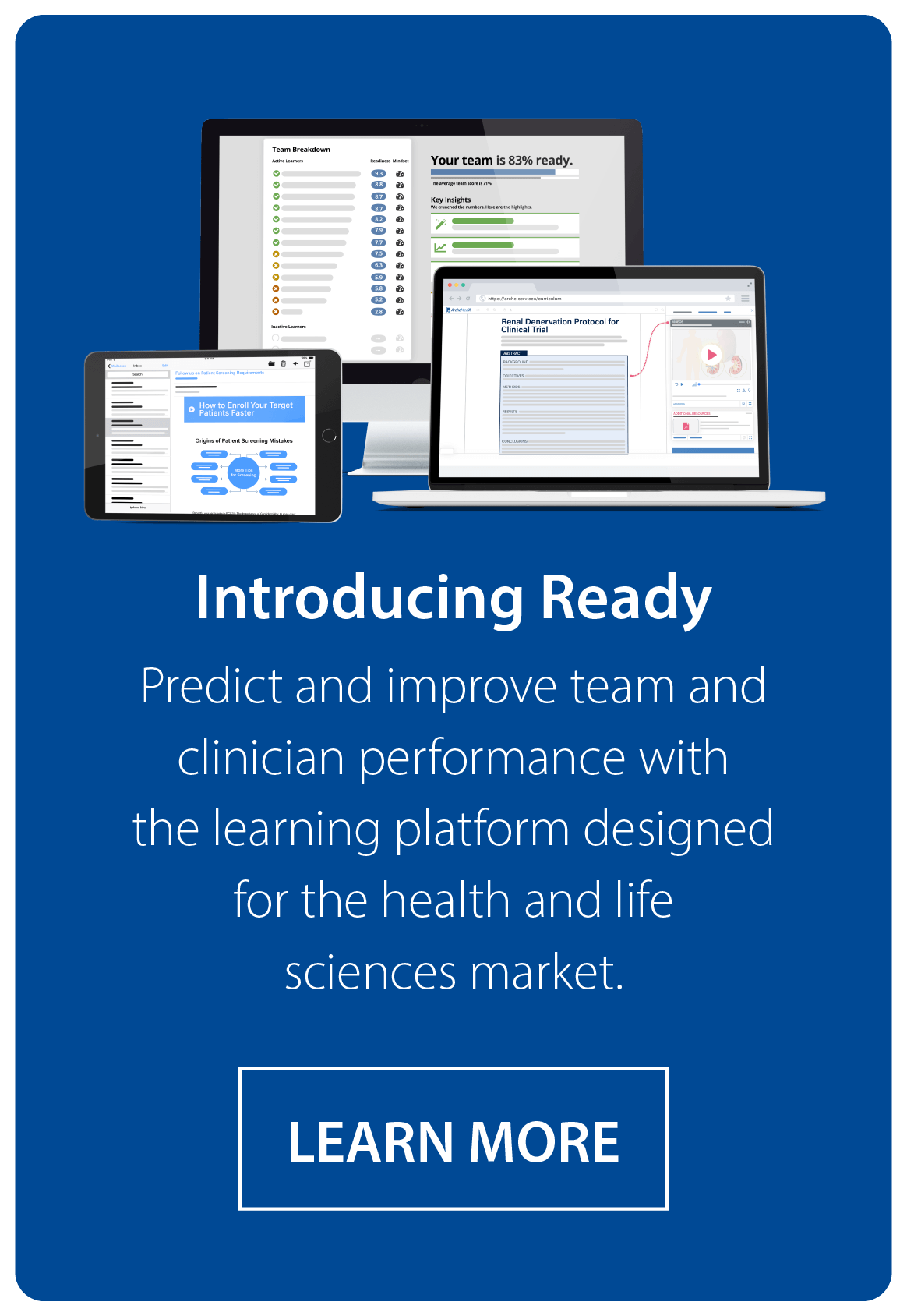
We recently spoke with Carl Cook, Vice President of Clinical Operations at Black Diamond Therapeutics, a biotech focused on the discovery and development of precision medicines for cancer. The company is based in Cambridge, MA. We wanted to share these excerpts from the conversation:
ArcheMedX:
What are the biggest and/or most common challenges you encounter during the preparation or conduct of a clinical trial?
Cook:
The first challenge is assembling a dynamic, cohesive, diverse, experienced team that is aligned on the hypothesis to be tested and understands it so that we can put together a plan, not only for executing against the project priorities, which includes writing the protocol, presenting the compelling science, and, of course, testing the hypothesis.
ArcheMedX:
How do you know a team is aligned?
Cook:
As a leader, you have to “check-in” on a regular basis to make sure that each team member is focused on the same goal, the same delivery time frame, and the same response to a challenge. The other piece is clarity — clarity of purpose and clarity of response. And, we must all have a common alignment around focusing on the patient. If we focus on doing the right thing for the patient, everything else will follow.
ArcheMedX:
How do you go about checking in?
Cook:
I have formal meetings with the key leads on the team twice a week. I also have one-on-ones with each of the leaders during the week. So, each day I do an assessment of our alignment and our ongoing challenges — the inherent challenges of running an early-stage oncology study and then the added challenges of COVID-19.
ArcheMedX:
Could you provide an example of good alignment and the result of it?
Cook:
I think back to the experience of 9-11. That morning, we were in a global team meeting with approximately 100 colleagues. One of our biostatisticians walked into the room and said, “We need to turn on the television.” We soon learned what was going on. It was surreal. We needed to take a moment and focus on getting clarity: What is it that is actually happening? What is the impact? Then, we knew we had to check in with each other. We needed to know that we were all okay. We needed to check that colleagues who weren’t in the room were also okay. And we needed to make sure that families were okay.

ArcheMedX:
The events of 9-11 came out of the blue, while the COVID-19 crisis developed over time. Does that make it different for you?
Cook:
In both cases, my approach starts with team check-ins. I make sure every day when talking with my direct reports and colleagues that we start by asking how everyone is and what they need. Our leadership has been fantastic in ensuring that any support anyone needs is provided. This allows us to clearly focus on the patients [on the study]. We have a team of dedicated professionals who cares about what we do for patients. That’s why they’re a part of our team.
ArcheMedX:
Is your work ongoing? If so, have you changed anything?
Cook:
Our trial is continuing. The only thing significantly changed is the amount of time and energy we spend focusing on how well people are doing personally and professionally.
ArcheMedX:
How do you typically go about training site staff?
Cook:
We invest significant time and effort in meetings on the protocol and on the responsibilities of the investigators and the research staff. Of course, now we’re conducting meetings via video and WebEx, etc. We’ve also put in place different tools and templates that we use to educate our internal staff, our partner staff at our CRO, and, of course, our site staff.
ArcheMedX:
There is so much information that must be shared before and during a clinical trial. How do you know that your staff is adequately prepared?
Cook:
We do a lot of dry runs. For example, before we would put a team member in a key role presenting at a site, we hold a lot of internal mock site initiation visits. And then we actually do a sort of see-one, do-one, teach-one kind of thing. We let people observe first, then we run them through presenting perhaps a part of the protocol, and then we have them present it internally a couple of times before they actually present it to site staff. Refinement comes with repetition.
ArcheMedX:
Anything else you would like to share with us?
Cook:
Yes. Always remember that there is a patient on the other end of that data point, and before you finish a protocol, make sure that you have consulted with a patient advocate and that your investigators involved in conducting that trial have provided input, because, at the end of the day, that’s going to give you a protocol that works well for investigators, for testing your hypothesis, and for patients. Taking the extra time to get it right for your investigator staff and your patients makes a world of difference.
ArcheMedX:
At ArcheMedX, we align with Carl’s people-first approach to designing and running clinical trials. After all, we are the strongest and most successful when we connect with each other and care for each other.





